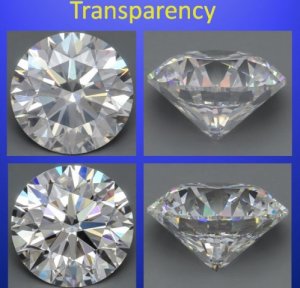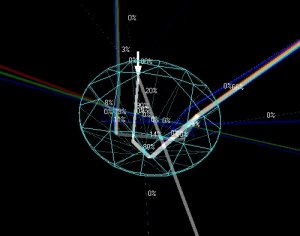- Joined
- Sep 2, 2002
- Messages
- 2,859
Since you choose to ignore my first remark, Garry, please can you answer the following question. It should be no problem for you, with all the computing power at your disposal.
Could you tell me of the rays of light exiting a diamond, on average, what percentage of these ray are actually white? I am curious.
Live long,
Could you tell me of the rays of light exiting a diamond, on average, what percentage of these ray are actually white? I am curious.
Live long,





300x240.png)